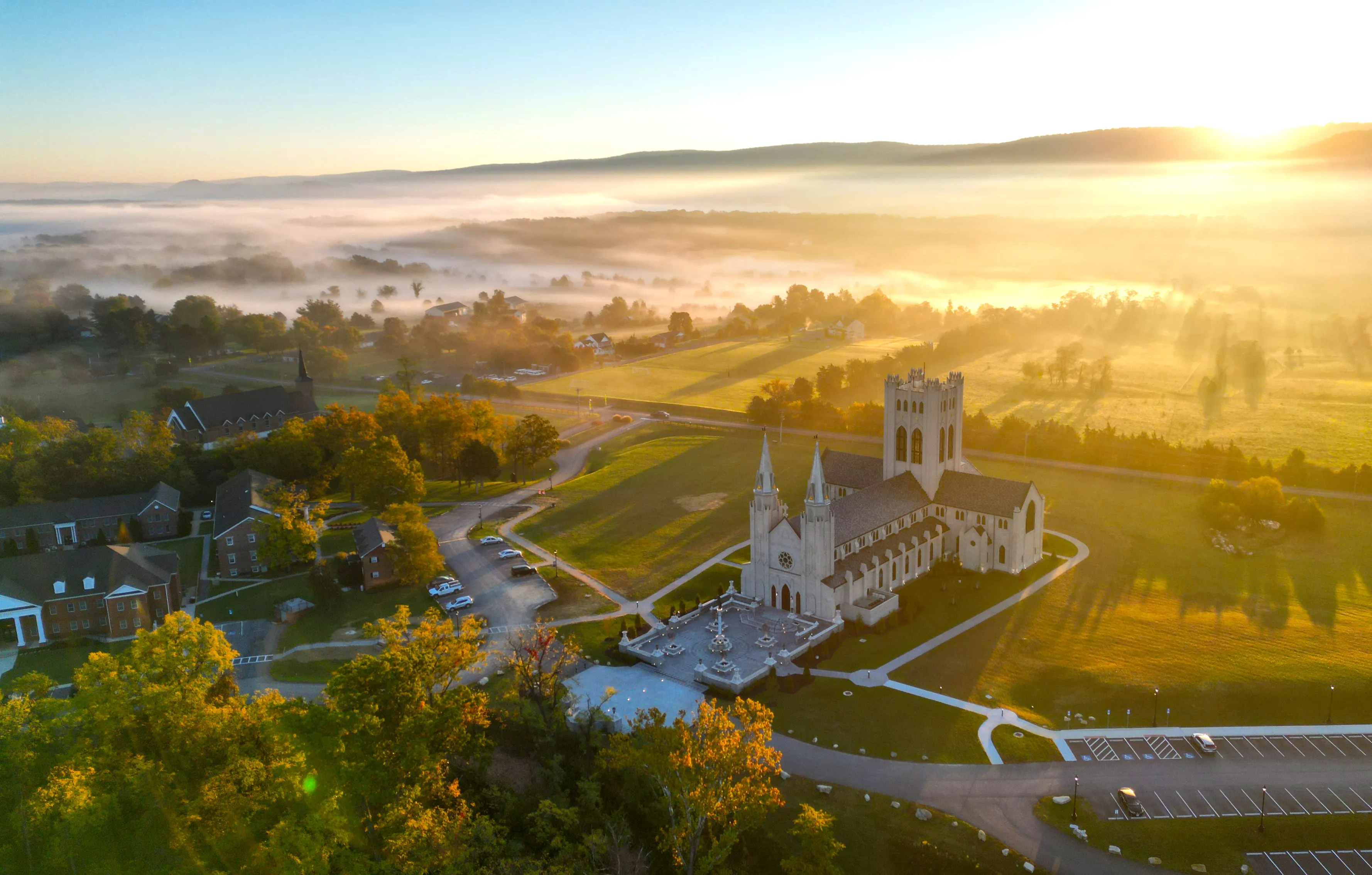![Preparing for death with the Sister Servants of Mary #Catholic
The Sister Servants of Mary hold a procession with the statue of Our Lady of the Assumption at Mary Health of the Sick Convalescent Hospital in Newbury Park, California. / Credit: Photo courtesy of the Servants of Mary, Ministers to the Sick
CNA Staff, Nov 2, 2025 / 06:00 am (CNA).
When a 93-year-old Catholic father from New Orleans had a stroke, he knew he was prepared to die.Clinton Jacob attended adoration and Mass daily and was “rarely without a prayer book or rosary in hand,” according to his daughter, Kim DeSopo.“[He] never spoke of death with fear or sadness,” she told CNA. “He would simply say, ‘I’ll be going home.’”But not everyone feels prepared for death.The Servants of Mary, Ministers to the Sick, is a Catholic community of sisters who dedicate their lives to caring for the sick and dying in New Orleans and around the world. As nurses, they are at the bedside of the dying through the long nights, whether their patients are lifelong Catholics or have never thought about religion.The sisters often encounter patients as well as family members who are struggling to accept “an illness or imminent death,” Sister Catherine Bussen, a Servant of Mary, told CNA.“Many times, there is a need for reconciliation within the family, for a return to their faith, for acceptance of their condition, etc.,” Bussen said.As medical professionals, the sisters provide physical treatment, but they also walk with their patients throughout their illnesses, encouraging patients and families “always with the hope of eternal life,” Bussen said. DeSopo, Jacob’s daughter, called the sisters for support. The next day, Bussen arrived at their doorstep, and every night for two weeks, she sat at Jacob’s bedside. Bussen’s presence was “a gift,” DeSopo said. “Sister Catherine brought peace and calm into a time filled with stress and sorrow.”“Her prayers, patience, and care provided comfort not only to my father but also to my mother, who could finally sleep knowing someone trustworthy and compassionate was by his side,” DeSopo said, recalling Bussen’s “selfless dedication” and “unwavering faith.” Bussen was with Jacob when he died on Sept. 26, 2024. She prepared his body, cleaning him and sprinkling him with holy water, and then prayed with his wife and daughter.“I will never forget the care and dignity she gave him, even after his final breath,” DeSopo said.Sister Catherine (left) and Sister Dorian Salvador (right) pray for the soul of Kim DeSopa’s father on Oct. 1, 2024, at St. Clement of Rome Church in Metairie, Louisiana. Credit: Photo courtesy of Kim DeSopa and Sister CatherineMary at the foot of the cross “I was sick and you visited me.”This Scripture verse, Matthew 25:36, summarizes the charism of the Servants of Mary, according to Bussen. When they care for the sick, they care for Christ.The sisters will care for anyone in need, preferably within the sick person’s own home. In those who are suffering, the sisters “discover Jesus carrying his cross,” Bussen explained. “By caring for the sick, we believe that we are caring for Christ himself, who still suffers today in the suffering mystical body of Christ,” she said.Sister Angélica Ramos cares for Mrs. Hura, a resident of Mary Health of the Sick Convalescent Hospital in Newbury Park, California. Credit: Photo courtesy of the Servants of Mary, Ministers to the SickFounded in Madrid, Spain, in the 1800s, the sisters care for the sick and dying in Louisiana, Kansas, and California as well as throughout Central and South America, Spain, France, England, Italy, Cameroon, the Philippines, and Indonesia. They run a hospital for the poor in Bamenda, Cameroon, as well as two missionary houses in Oaxaca, Mexico.The sisters look to Mary as an example as they accompany those who are suffering.“Although we are not able to take away someone’s cross, we are present to them, offering all to the Father, like Mary did at the cross of Jesus, that all suffering may be redemptive and fruitful,” Bussen said.“Every one of us sisters would tell you that it is an absolute privilege to be able to enter into the intimacy of a family’s home, listening to the dying, praying with them, and encouraging them on the final stage of their journey as their soul passes into eternity,” she said.Sister Servants of Mary Fatima Muñoz and Carmela Sanz (front) celebrate a May crowning in Kansas City, Kansas. Credit: Photo courtesy of the Servants of Mary, Ministers to the Sick“Our Catholic Christian faith is a beautiful comfort during these times because it is all about looking forward to the promised life to come, the whole goal of our lives, eternal life,” Bussen said.One woman from New Orleans received news no one wants to hear — she had a terminal illness. Though she was not religious, she knew she needed help and did not know who else to turn to, so she called the Servants of Mary.As they cared for her and helped her deal with her terminal diagnosis, the sisters learned the woman was “completely alone in the world,” said Bussen, who took care of her. Other people from the surrounding Catholic community volunteered to stay with her.During that time, the woman found a home in the Catholic Church and received the sacrament of baptism.Her “anxiety was transformed into peace,” said Bussen, who was with her as she died.“As the end drew near, she had a new faith family,” Bussen said. “She was no longer alone.”Remembering the dead The life of a sister Servant of Mary is “contemplative in action.” The sisters unite “our prayer life with our work — going about what we are doing, in all the business of daily life, in a prayerful spirit,” Bussen said.The sisters have time set aside for prayer and work, “but these two aspects cannot be separated from one another,” she continued. “The grace and light received in prayer flows into our work and ministry, and everything we experience in our ministry is taken to prayer.”The Servants of Mary, Ministers to the Sick care for the sick and the dying. Credit: Photo courtesy of the Servants of Mary, Ministers to the SickThroughout the year, the sisters take special care to remember the dead. In November especially, Bussen said the sisters “remember all our patients who have died with us by placing their names in our chapel and offering Masses for their eternal happiness.”“Even after a patient has passed,” she said, “and they no longer need physical care, our ministry continues by praying for their soul.”](https://unitedyam.com/wp-content/uploads/2025/11/preparing-for-death-with-the-sister-servants-of-mary-catholic-the-sister-servants-of-mary-hold-a-procession-with-the-statue-of-our-lady-of-the-assumption-at-mary-health-of-the-sick-convalescent-h.webp)

The Sister Servants of Mary hold a procession with the statue of Our Lady of the Assumption at Mary Health of the Sick Convalescent Hospital in Newbury Park, California. / Credit: Photo courtesy of the Servants of Mary, Ministers to the Sick
CNA Staff, Nov 2, 2025 / 06:00 am (CNA).
When a 93-year-old Catholic father from New Orleans had a stroke, he knew he was prepared to die.
Clinton Jacob attended adoration and Mass daily and was “rarely without a prayer book or rosary in hand,” according to his daughter, Kim DeSopo.
“[He] never spoke of death with fear or sadness,” she told CNA. “He would simply say, ‘I’ll be going home.’”
But not everyone feels prepared for death.
The Servants of Mary, Ministers to the Sick, is a Catholic community of sisters who dedicate their lives to caring for the sick and dying in New Orleans and around the world. As nurses, they are at the bedside of the dying through the long nights, whether their patients are lifelong Catholics or have never thought about religion.
The sisters often encounter patients as well as family members who are struggling to accept “an illness or imminent death,” Sister Catherine Bussen, a Servant of Mary, told CNA.
“Many times, there is a need for reconciliation within the family, for a return to their faith, for acceptance of their condition, etc.,” Bussen said.
As medical professionals, the sisters provide physical treatment, but they also walk with their patients throughout their illnesses, encouraging patients and families “always with the hope of eternal life,” Bussen said.
DeSopo, Jacob’s daughter, called the sisters for support. The next day, Bussen arrived at their doorstep, and every night for two weeks, she sat at Jacob’s bedside.
Bussen’s presence was “a gift,” DeSopo said. “Sister Catherine brought peace and calm into a time filled with stress and sorrow.”
“Her prayers, patience, and care provided comfort not only to my father but also to my mother, who could finally sleep knowing someone trustworthy and compassionate was by his side,” DeSopo said, recalling Bussen’s “selfless dedication” and “unwavering faith.”
Bussen was with Jacob when he died on Sept. 26, 2024. She prepared his body, cleaning him and sprinkling him with holy water, and then prayed with his wife and daughter.
“I will never forget the care and dignity she gave him, even after his final breath,” DeSopo said.

Mary at the foot of the cross
“I was sick and you visited me.”
This Scripture verse, Matthew 25:36, summarizes the charism of the Servants of Mary, according to Bussen.
When they care for the sick, they care for Christ.
The sisters will care for anyone in need, preferably within the sick person’s own home. In those who are suffering, the sisters “discover Jesus carrying his cross,” Bussen explained.
“By caring for the sick, we believe that we are caring for Christ himself, who still suffers today in the suffering mystical body of Christ,” she said.

Founded in Madrid, Spain, in the 1800s, the sisters care for the sick and dying in Louisiana, Kansas, and California as well as throughout Central and South America, Spain, France, England, Italy, Cameroon, the Philippines, and Indonesia. They run a hospital for the poor in Bamenda, Cameroon, as well as two missionary houses in Oaxaca, Mexico.
The sisters look to Mary as an example as they accompany those who are suffering.
“Although we are not able to take away someone’s cross, we are present to them, offering all to the Father, like Mary did at the cross of Jesus, that all suffering may be redemptive and fruitful,” Bussen said.
“Every one of us sisters would tell you that it is an absolute privilege to be able to enter into the intimacy of a family’s home, listening to the dying, praying with them, and encouraging them on the final stage of their journey as their soul passes into eternity,” she said.

“Our Catholic Christian faith is a beautiful comfort during these times because it is all about looking forward to the promised life to come, the whole goal of our lives, eternal life,” Bussen said.
One woman from New Orleans received news no one wants to hear — she had a terminal illness. Though she was not religious, she knew she needed help and did not know who else to turn to, so she called the Servants of Mary.
As they cared for her and helped her deal with her terminal diagnosis, the sisters learned the woman was “completely alone in the world,” said Bussen, who took care of her. Other people from the surrounding Catholic community volunteered to stay with her.
During that time, the woman found a home in the Catholic Church and received the sacrament of baptism.
Her “anxiety was transformed into peace,” said Bussen, who was with her as she died.
“As the end drew near, she had a new faith family,” Bussen said. “She was no longer alone.”
Remembering the dead
The life of a sister Servant of Mary is “contemplative in action.”
The sisters unite “our prayer life with our work — going about what we are doing, in all the business of daily life, in a prayerful spirit,” Bussen said.
The sisters have time set aside for prayer and work, “but these two aspects cannot be separated from one another,” she continued. “The grace and light received in prayer flows into our work and ministry, and everything we experience in our ministry is taken to prayer.”

Throughout the year, the sisters take special care to remember the dead.
In November especially, Bussen said the sisters “remember all our patients who have died with us by placing their names in our chapel and offering Masses for their eternal happiness.”
“Even after a patient has passed,” she said, “and they no longer need physical care, our ministry continues by praying for their soul.”
Read More

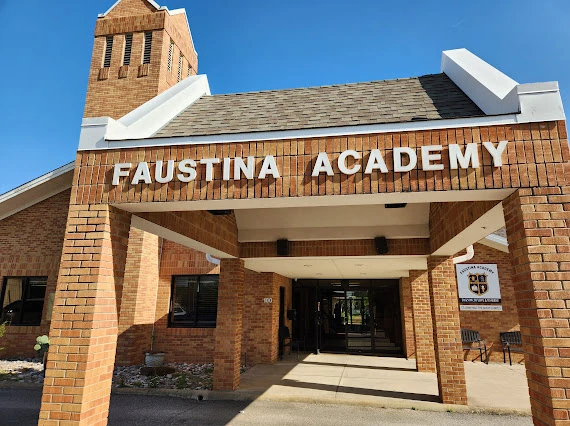




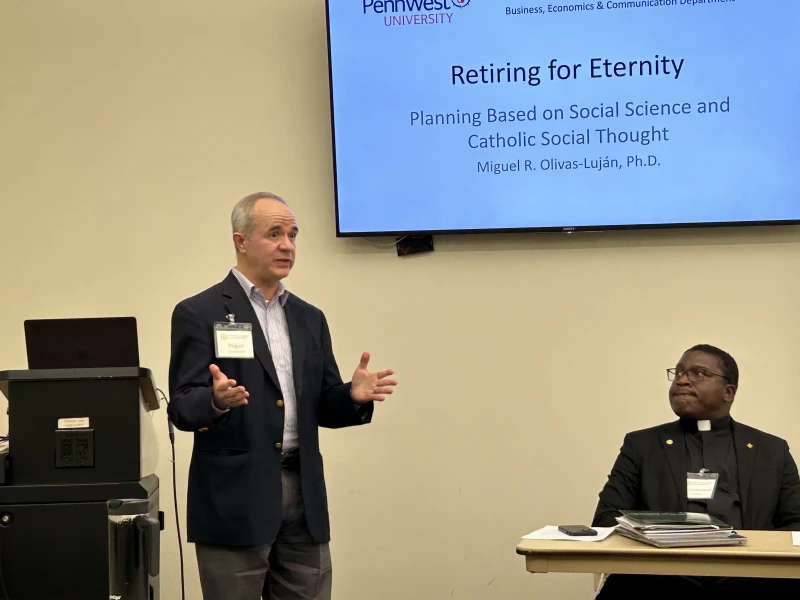


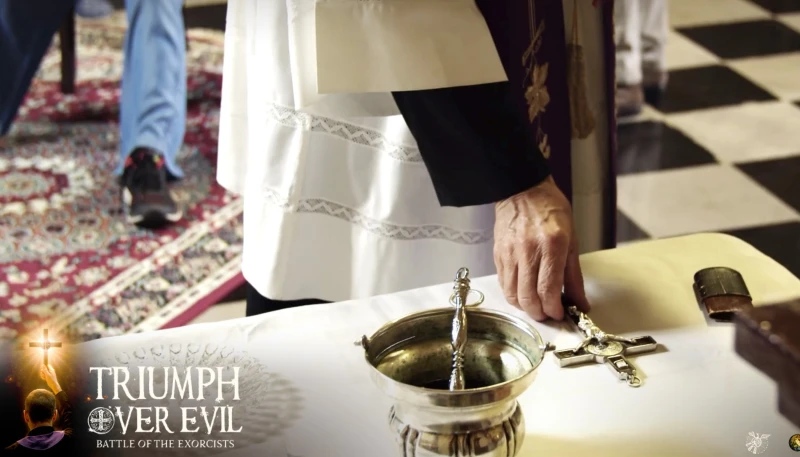

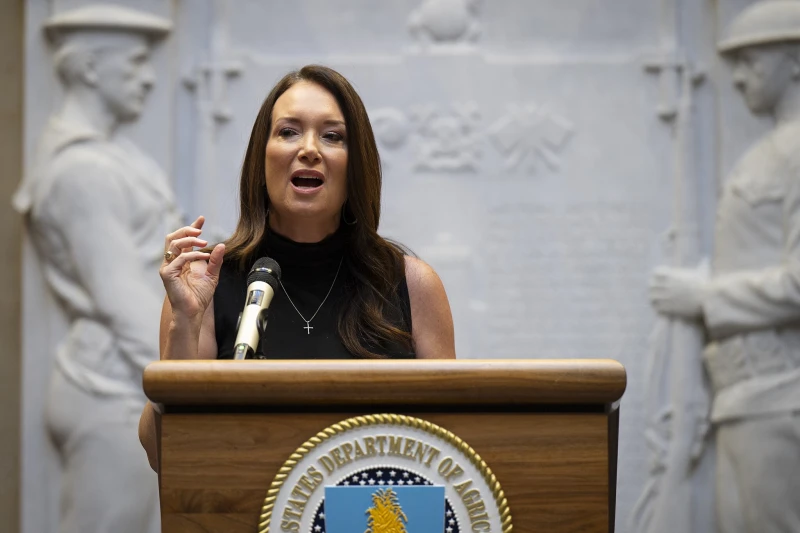

![Brooklyn usher murdered in subway remembered as ‘tremendous man of faith’ #Catholic
Nicola Tanzi. / Credit: Photo courtesy of Deacon Anthony Mammoliti
CNA Staff, Oct 10, 2025 / 15:37 pm (CNA).
A Catholic man who served as an usher at his Brooklyn parish before he was killed in a brutal attack in a city subway is being remembered as a “good soul” with a “tremendous” faith in Christ.Sixty-four-year-old Nicola Tanzi was killed on Oct. 7, when police say 25-year-old David Mazariegos beat him to death in the Jay Street-MetroTech station in Brooklyn. He later died at New York-Presbyterian Brooklyn Methodist Hospital. New York City Police Commissioner Jessica Tisch described the attack as “horrific.” Police were able to apprehend the suspect using photos and a physical description transmitted through their phones, Tisch said. Mazariegos has reportedly been arrested multiple times before. U.S. Transportation Secretary Sean Duffy said on X that state Gov. Kathy Hochul “has blood on her hands” over the death.“Nicola Tanzi’s life was taken by another repeat offender roaming New York’s streets freely,” Duffy wrote. ”New York needs leaders who will back the blue and make America’s transit system safe again.”Victim mourned as a ‘simple, good person’Those who knew Tanzi have mourned his death in the days following his murder. Deacon Anthony Mammoliti told CNA in an interview on Oct. 10 that Tanzi was “probably the most Christ-like parishioner I’ve encountered.” Mammoliti serves at St. Dominic’s Parish in Bensonhurst where Tanzi attended. Tanzi served as an usher there at the Italian Mass for at least 10 years, the deacon said. “He was a man who would give of himself,” Mammoliti said. “In his civilian job, he would often, without hesitation, switch shifts to allow married colleagues to have family time. When I engaged with him in the parish, it was always with a congenial smile.”Tanzi would regularly greet elderly parishioners with a “Buon Giorni!” and “Come Stai!” while holding the door for them, Mammoliti said. The deacon said the parish is in shock over the news. “We’re all in a state of disbelief. The old expression, ‘Bad things happen to good people,’ that’s the first thought that came to mind,” he said. Deacon John Heyer of Sacred Hearts and St. Stephen Catholic Church in the city’s Carroll Gardens neighborhood told CBS News that Tanzi was “definitely a good person. Like, a simple, good person.”“[He was the] type of guy who went to work and came home and was part of different community organizations,” Heyer said. “Especially those related to his family’s heritage and roots in Mola di Bari, Italy.”Mazariegos, the suspect in the killing, reportedly has multiple criminal cases open against him throughout the city. He allegedly admitted to the killing afterward. Mammoliti said Tanzi, a “tremendous man of faith” with a “good soul,” had he survived the assault, would have forgiven his assailant. “He would have done what he normally did, which was to be a good Christian,” he said.“Your first initial reaction [upon hearing the news] is, you know, eye for eye, tooth for tooth,” the deacon admitted. “But we’re called to be people of faith. We’re called to emulate the teachings of the Gospel.” “We would honor Mr. Tanzi if we would live up to what Jesus teaches us, which is to forgive our enemies.”](https://unitedyam.com/wp-content/uploads/2025/10/brooklyn-usher-murdered-in-subway-remembered-as-tremendous-man-of-faith-catholic-nicola-tanzi-credit-photo-courtesy-of-deacon-anthony-mammoliticna-staff-oct-10-2025-15.webp)



![New Catholic app hopes to ‘relight the hope of Catholic dating’ #Catholic
Daniël Hussem and Emily Wilson-Hussem are the creators of the new Catholic dating app, SacredSpark. / Credit: Photo courtesy of Daniël Hussem and Emily Wilson-Hussem
CNA Staff, Oct 9, 2025 / 07:10 am (CNA).
When Emily Wilson-Hussem began sharing “matchmaking” posts on Instagram, inviting Catholic singles to share their names and locations to connect with others, she wasn’t expecting that her lighthearted experiment would lead to 12 marriages, 20 engagements, hundreds of dating couples, and even a baby.The Catholic speaker and digital content creator realized that young Catholics are in search of holy marriages but need help finding one another. This led her and her husband, Daniël Hussem, to create a new Catholic dating app — SacredSpark.The new matchmaking app blends technology and tradition to foster meaningful online connections with the goal of creating lasting offline relationships.“Over these years I have seen the difficulty singles [have] to connect with one another, especially of the same age, and a lot of the young single Catholics I met were having a really hard time, and so I felt like a nudge from the Lord,” Wilson-Hussem told CNA.After seeing the immense response from young people on her matchmaking posts, yet realizing the downfalls of trying to help connect people on Instagram, the Hussems decided to create an app that was intentional and focused on the fact that each user was made in the image and likeness of God.SacredSpark is a Catholic dating and matchmaking app that is blending technology and tradition to foster meaningful online connections with the goal of creating lasting offline relationships. Credit: SacredSparkOne of the main features of SacredSpark is its commitment to more meaningful connections between people. To foster that, all profile pictures are blurred. Photos become unblurred once both individuals match with one another. So instead of simply swiping through images of a person, users can record audio messages introducing themselves and other users can listen and determine if they believe there could be a connection.Hussem explained that this feature was created “because we want to start meaningful connections beyond just the appearance.”The couple also pointed out that unlike other dating apps that allow users to place filters on things like physical traits, including eye color, hair color, or even height, SacredSpark does not allow for any filters to be placed on physical qualities.“For us, we want it to be extremely intentional about the person as a whole, not just their physical appearance,” Hussem shared. “If you’re looking at the general scope of a sacramental marriage, are those things — someone’s color of their eyes or the color of their hair or their height — I think those are more superficial things that people can get sidetracked by versus just these intentional things.”“Our focus is on the image and likeness of God in each person you will connect with on the app. That’s a huge part of the core of what we’re doing,” Wilson-Hussem added.The app also includes a matchmaking feature, which allows the user to invite a friend or family member to act as a matchmaker on their behalf on the app. Wilson-Hussem explained that this feature was added into the app because of the great success matchmakers had on her Instagram posts. “A huge part of the success was a girl saying, ‘I have a brother, Jeff. He’s 31 and he lives in Wisconsin. If there are any great gals out there, I would love to connect you,’” she shared. “I would say at least half of the marriages have been from one person who put one person out there and was linking two other people and we thought, ‘Wow. A, that’s amazing because a lot of people know single Catholics, they have fun with it, but B, our singles need support. They need to feel like people are in their corner.’”She added: “You can hire a matchmaker for thousands of dollars — a person who has to get to know you, a person who has to look at who you are on paper. The people who have known you your whole life know you best. They know what you’re looking for. So, why don’t we find a way to activate those people and support our singles?”SacredSpark will be launched and open to the public in mid-October, but interested singles can already sign up to join the waitlist. The Hussems said they hope the new app will “relight the hope of Catholic dating.”“The overall mission is actually to help build up the Church one relationship at a time,” Daniël Hussem said.“I think a big part of the cultural breakdown is the breakdown of the family, and we want SacredSpark to really be a place, down the road, where we can connect people who will build up the Church because they’ve entered into a sacramental marriage and will build up the family,” Wilson-Hussem added. “The restoration of the family is going to be a huge part of the next many years and we think SacredSpark, hopefully, will play a part in that.”](https://unitedyam.com/wp-content/uploads/2025/10/new-catholic-app-hopes-to-relight-the-hope-of-catholic-dating-catholic-daniel-hussem-and-emily-wilson-hussem-are-the-creators-of-the-new-catholic-dating-app-sacredspark-cred.webp)




